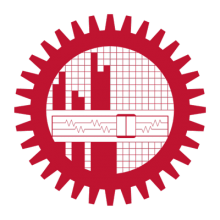Dr. Nazma Parveen
Professor
Specialization
Specialization
Fluid Dynamics
Academic Biography
Contact
- Email: nazma@math.buet.ac.bd
| All Publications |
|---|
|
Tarikul Islam,
N. Parveen ,
R. Nasrin
Mathematical modeling of unsteady flow with uniform/non-uniform temperature and magnetic intensity in a half-moon shaped domain Science Direct, Heliyon, 2022 Publication Type: Journal View Summary/Abstract , Publication Link
The mathematical modeling of two-dimensional unsteady free convective flow and thermal transport inside a half-moon shaped domain charged in the presence of uniform/non-uniform temperature and magnetic effects with Brownian motion of the nanoparticles has been conducted. Thirty-two types of nanofluids in a combination of various nanoparticles and base fluids having different sizes, shapes, and solid concentrations of nanoparticles are chosen to examine the better performance of heat transfer. The circular boundary is cooled while the diameter boundary is heated with uniform/non-uniform temperature. An external uniform/non-uniform/periodic magnetic field is imposed along diameter. The powerful partial differential equations solver, finite element method of Galerkin type, has been engaged in numerical simulation. The numerical solution's heat transfer mechanism reaches a steady state from the unsteady situation within a very short dimensionless time of about 0.65. The thermal transport rate enhances for increasing buoyancy force whereas decreases with higher magnetic intensity. The uniform thermal condition along the diameter of half-moon gives a higher thermal transport rate compared to non-uniform heating conditions. The non-uniform magnetic field provides greater values of the mean Nusselt number than the uniform field. In addition, the outcomes also predict that a better rate of temperature transport for kerosene-based nanofluid than water-based, ethylene glycol-based, and engine oil-based nanofluid. The heat transfer rate is observed at about 67.86 and 23.78% using Co-Kerosene and Co-water nanofluids, respectively, with an additional 1% nanoparticles volume fraction. The blade shape nanoparticles provide a better heat transfer rate than spherical, cylindrical, brick, and platelet shapes. Small size nanoparticles confirm a higher value of average Nusselt number than big size. Mean Nusselt number increases 22.1 and 5.4% using 1% concentrated Cu-water and Cu-engine oil nanofluid, respectively than base fluid.
|



